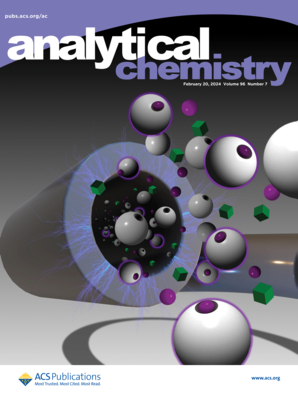Does Native Capillary Zone Electrophoresis-Mass Spectrometry Maintain the Structural Topology of Protein Complexes?
IF 6.7
1区 化学
Q1 CHEMISTRY, ANALYTICAL
引用次数: 0
Abstract
Native capillary zone electrophoresis-mass spectrometry (nCZE-MS) is a useful analytical tool for studying protein complexes. However, the extent to which the protein complexes maintain their native structural topology in nCZE-MS compared to traditional native MS (nMS) is still not fully characterized. In this technical note, we contribute to this topic by coupling nCZE-MS with surface-induced dissociation (SID) for two well-studied protein complexes (streptavidin and human recombinant C-reactive protein). SID cleaves the weakest interface of a given complex, making it a powerful diagnostic tool for identifying perturbations of protein complex structures based on fragmentation patterns. The SID fragmentation patterns of the two protein complexes from nCZE-MS under normal and charge-reducing conditions show a high similarity index compared to those from direct infusion. Additionally, nCZE-MS shows the potential to separate different conformations or different proton distributions that have subtle differences. Although only two cases are shown, the results suggest that nCZE-MS can maintain the native-like structural topology of protein complexes.

求助全文
约1分钟内获得全文
求助全文
来源期刊

Analytical Chemistry
化学-分析化学
CiteScore
12.10
自引率
12.20%
发文量
1949
审稿时长
1.4 months
期刊介绍:
Analytical Chemistry, a peer-reviewed research journal, focuses on disseminating new and original knowledge across all branches of analytical chemistry. Fundamental articles may explore general principles of chemical measurement science and need not directly address existing or potential analytical methodology. They can be entirely theoretical or report experimental results. Contributions may cover various phases of analytical operations, including sampling, bioanalysis, electrochemistry, mass spectrometry, microscale and nanoscale systems, environmental analysis, separations, spectroscopy, chemical reactions and selectivity, instrumentation, imaging, surface analysis, and data processing. Papers discussing known analytical methods should present a significant, original application of the method, a notable improvement, or results on an important analyte.
 求助内容:
求助内容: 应助结果提醒方式:
应助结果提醒方式:


